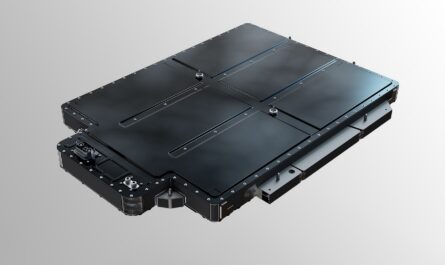Seismic Surveys- An important technique for oil and gas exploration
Seismic surveys play a vital role in exploration of oil and gas resources buried deep underground. It is a non-intrusive geophysical method to map the subsurface strata by creating sound waves and analyzing their reflection and refraction patterns. In this article, we will discuss the techniques involved in seismic surveys, their significance for oil and gas exploration, advantages, limitations and latest advancements.
What are seismic surveys?
Seismic surveys involve generating controlled sound waves using seismic sources and recording the reflection and refraction patterns of these waves using arrays of geophones and hydrophones. The seismic sources commonly used are explosive charges, vibrator trucks, air guns and marine sparkers. These sources create acoustic waves that travel downwards into the earth. Upon encountering interfaces between subsurface rock layers with different acoustic impedances, a portion of the sound energy gets reflected back towards the surface. Arrays of geophones on land and hydrophones in marine environment record these reflections. Modern seismic recording systems have thousands of sensor channels to record multiple reflections arriving at slight time delays.
Significance of seismic surveys
Seismic surveys provide crucial subsurface information to identify potential oil and gas reservoirs like structures of sedimentary layers, faults, folds, stratigraphic traps and fluid contacts. They help map the detailed sub-surface geology and structure beneath areas with potential hydrocarbon accumulations. This aids exploration and production companies in selecting optimum drilling locations with highest chances of success. They reduce the risks involved by providing clear images of subsurface several kilometers deep. Repeat surveys are also conducted to monitor reservoirs and aid enhanced recovery techniques. Overall, seismic surveys play a pivotal role in developing successful exploration strategies and profitable field development plans.
Onshore vs offshore seismic acquisition
The techniques differ for onshore and offshore seismic data acquisition based on the environment. On land, bulldozers are used to create walkways in remote areas for deploying geophone strings. Vibrator trucks generate low-frequency ground vibrations as seismic source. Offshore surveys use marine sources like air guns towed behind ships. Hydrophone streamers several kilometers long are deployed behind the ship. Air guns produce acoustic pulses that travel through water and penetrate seabed rocks. Their reflections are recorded by hydrophones. Offshore 3D surveys provide high resolution images of deeper foldbelts due to thicker sedimentary basins in coastal regions.
Latest advancements
Recent advancements have improved seismic data quality and reduced environmental impacts. 3D surveys involving dense sensor arrays generate ultra-high resolution volumetric images of subsurface. 4D/4C seismic monitors reservoirs over time by repeated surveying and outputs time-lapse images. Independent Component Analysis separates seismic reflections from cultural noise. Massively parallel processing systems handle big seismic data volumes. Permanent reservoir monitoring uses seabed sensor nodes. Towed streamer simulations model streamer dynamics for optimal data acquisition. These are transforming exploration by increasing drilling success rates and enabling enhanced oil recovery technologies.
Advantages of seismic surveys
Seismic surveys have some clear advantages over other geophysical techniques:
– Provide direct images of subsurface geology up to several kilometers deep based on seismic reflectivity principles. This aids structural mapping.
– Non-destructive technique that does not require drilling of exploratory wells initially, reducing upfront costs.
– Can map subsurface across large areas economically using 2D/3D surveys by deploying multiple receivers simultaneously.
– Time-lapse monitoring capabilities through repeat surveys help characterize reservoirs and optimize production over time.
– High resolution 3D/4D surveys enable detailed imaging of complex subsurface reservoirs and faults.
Limitations of seismic surveys
However, there are also some limitations of seismic data:
-Provides only indirect lithological information based on acoustic impedance contrasts. Cannot determine fluid/gas contents directly.
– Deeper targets beyond a few kms are difficult to image due to signal attenuation with increased depth.
– Presence of gas clouds, basalt layers, salt domes can distort seismic reflectors due to their acoustic properties.
– Acquisition needs optimal source-receiver geometry and long processing to overcome statistical noise and generate useful images.
-Environemntal factors like weather, tides affect offshore acquisition quality. Onshore surveys are restricted by permits, infrastructure access.
– Time-lapse changes in hard-to-image areas are difficult to monitor affecting enhanced oil recovery applications.
Seismic surveys are the primary tool for sub-surface prospecting followed by exploratory drilling. Advancements continue to enhance precision of structural mapping for discoveries. Integration with well log, core and production data optimizes subsurface understanding. Looking ahead, permanent reservoir monitoring through dense fiber optics will further advance active 4D/5D seismic applications. Overall, it remains the backbone of oil and gas exploration worldwide by reducing project risks and improving field recovery rates over conventional methods.
Note:
1. Source: Coherent Market Insights, Public sources, Desk research
2. We have leveraged AI tools to mine information and compile it



